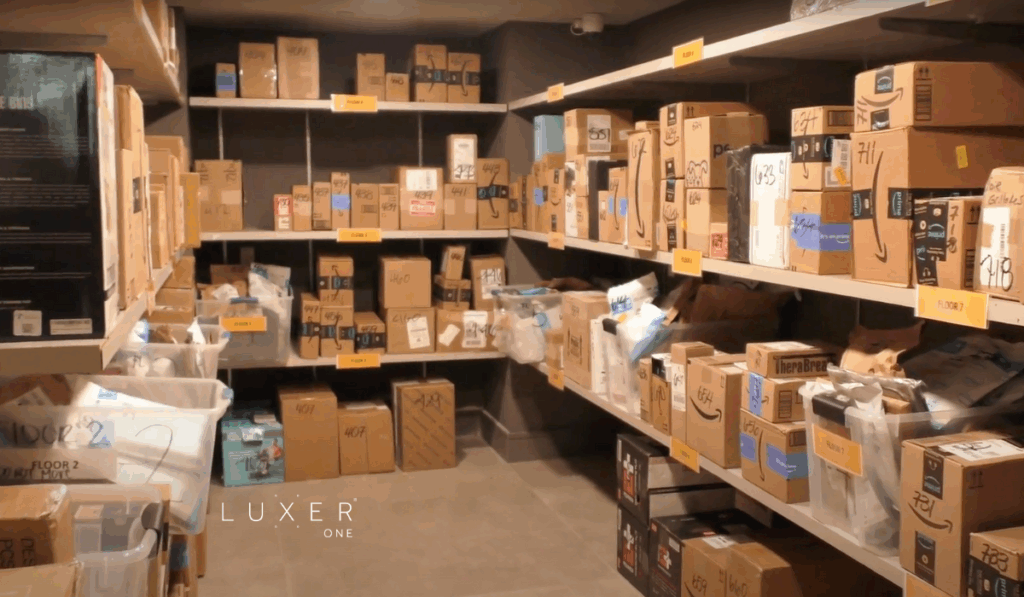“Last-mile delivery” refers to the final step where a shipment moves from a transportation hub or carrier vehicle to its destination. For property managers in multifamily communities, this step has become one of the most difficult parts of daily operations. Rising package volumes, limited staff capacity, and growing resident expectations have turned last-mile logistics into a constant balancing act between efficiency and service.
In this guide we’ll explain the most common last-mile delivery challenges for property managers, explore how they affect community operations, and highlight practical ways to solve them.
What causes last-mile delivery challenges for property managers?
The last mile is often the most expensive part of shipping. It now accounts for about 53% of total delivery costs, according to Smartroutes. Multifamily communities face additional barriers such as limited parking, controlled building access, and multiple delivery points. Carriers must navigate gates, elevators, and secure entry systems, which adds time and complexity.
For property teams, these barriers result in package delivery challenges like missed deliveries, misplaced parcels, and staff time lost to sorting or tracking packages. Many onsite teams end up managing deliveries manually, a process that quickly becomes unsustainable as package volumes increase.

How do resident expectations make delivery management harder?
Resident expectations have evolved dramatically. Studies show that 66% of shoppers expect same-day delivery in certain cases. When residents are used to fast and transparent delivery updates, even short delays can lead to frustration.
For property managers, this means higher demand for real-time updates and 24/7 access to packages. Without a reliable system in place, communities risk lower resident satisfaction scores and more service complaints during high-volume periods like holidays or Prime Day events.
Why is on-site logistics so complicated for multifamily properties?
Most apartment buildings were not designed to handle today’s volume of deliveries. Delivery drivers often have limited access, with no dedicated loading areas or temporary parking. According to Upper Inc., urban congestion and short delivery windows are among the top contributors to delivery inefficiency.
Once inside, carriers frequently leave packages in lobbies, offices, or hallways, forcing staff to sort and secure them later. This not only increases the chance of theft or misplaced items but also disrupts leasing office operations.
A dedicated package management solution, such as secure Package Lockers or automated Package Rooms, can simplify this process while keeping deliveries secure and accessible for residents.

How do failed deliveries impact property operations?
Failed deliveries create costly ripple effects. Around 5% of last-mile deliveries fail, at an average cost of $17.78 per attempt, according to Clickpost. In multifamily communities, a “failed” delivery might mean the driver couldn’t access the property, the resident wasn’t home, or the package was left in an unsecured location.
Each failed attempt leads to more time spent tracking packages, handling re-deliveries, or responding to resident complaints. The more frequently this happens, the harder it becomes for staff to maintain smooth operations during peak seasons.
How can property managers overcome last-mile delivery challenges?
The best long-term solution is to integrate smart package technology into your property’s operations. Systems like secure lockers and package rooms reduce manual handling, improve security, and provide residents with flexible pickup options. For example, our Multifamily Solutions are designed to support communities of all sizes, allowing property teams to manage deliveries efficiently while keeping residents satisfied.
To learn how technology is evolving, explore our blog on Future-Ready Package Solutions for Multifamily.
For a deeper operational strategy, download the Modern Multifamily Guide to Package Management.
When implemented effectively, these tools streamline last-mile delivery, reduce staff workload, and enhance the overall resident experience.

Final Thought
The last mile isn’t just about getting a package to a door, it’s about maintaining resident trust, operational efficiency, and property reputation. As delivery volumes continue to rise across the nation, property managers who adopt future-ready solutions will be the ones who stay ahead of resident expectations and operational challenges.
If you’re ready to reduce your property’s last-mile headaches and transform deliveries into a seamless experience, contact Luxer One today to explore how we can help.
-
Christina Draper, Marketing Content Manager at Luxer One, creates storytelling-driven content that connects with property management professionals and highlights innovations in multifamily package management. With a marketing background from UNC Charlotte, she develops cross-channel campaigns that showcase how Luxer One is redefining the resident experience.
See Posts





